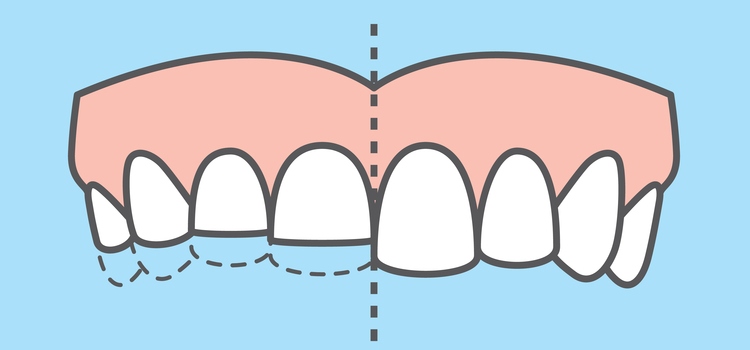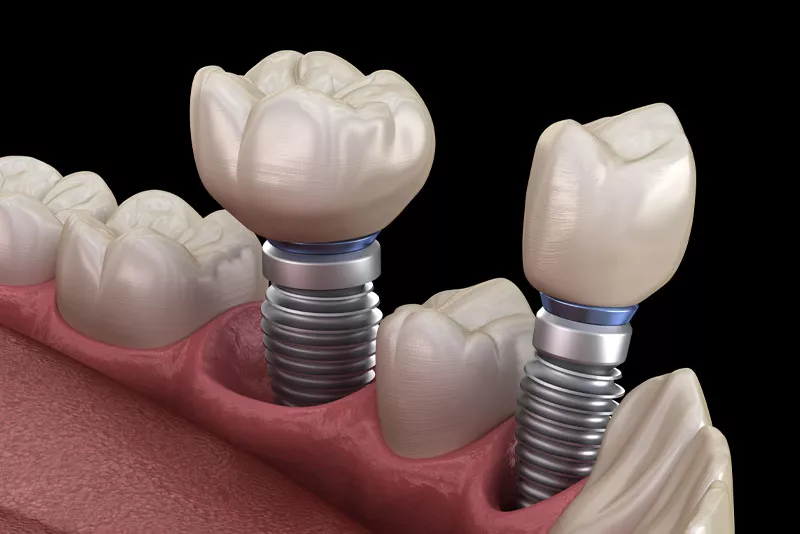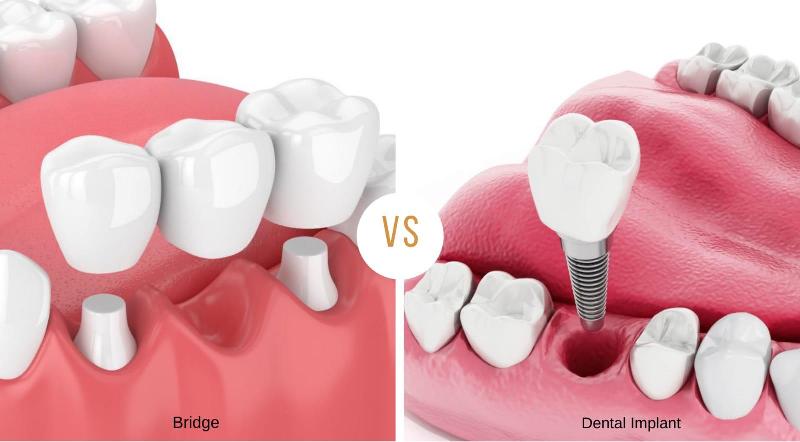
We all know the importance of maintaining a healthy dental hygiene regimen. Unfortunately, sometimes our teeth can still suffer damage in spite of our best efforts, and one of them is tooth calcification.
Have you ever heard of a calcified tooth? It may sound like a complex dental term, but in reality, it’s a common occurrence that can happen to anyone who consume too much calcium and minerals. The calcification of the root canal, also known as pulp sclerosis or calcific metamorphosis, can be a painful frustrating experience due to discoloration and damage it can do to your teeth. Calcification can transform even the healthiest of teeth into a dental mystery that warrants attention and understanding.
In this article, we will unravel the secrets behind calcified teeth, uncovering their causes, potential consequences, and treatment options. Whether you’re suffering from a calcified tooth or just curious about this dental condition, keep reading to learn more about how it affects the human body!
What is a Calcified Tooth?
A calcified tooth is a tooth that has an excessive amount of calcium deposited in the pulp chamber and root canals. This condition is better known as hypercalcification, where there is too much calcium in the enamel.
The pulp chamber houses the dental pulp, which consists of blood vessels, nerves, and connective tissues, while the root canals extend from the pulp chamber down to the root of the tooth.
In the case of a calcified tooth, there is excessive deposition of mineralized tissue within the pulp chamber and root canals. When this happens, the canal shrinks, impeding the normal function of the nerves and blood vessels. Blood flow to the tooth is reduced and the nerve function is hindered, thereby affecting the tooth’s vitality and responsiveness to stimuli.
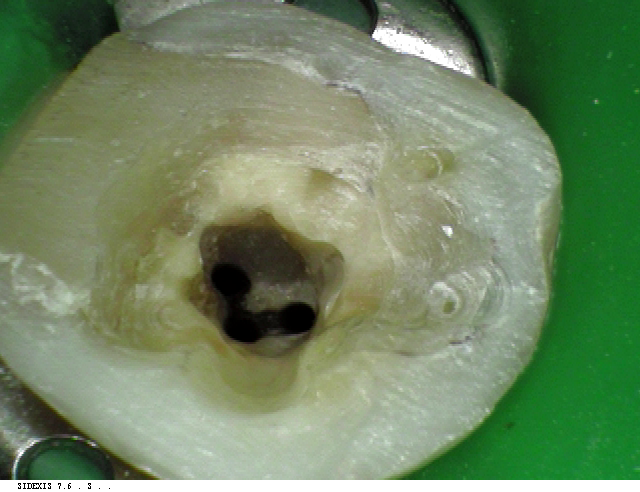
This is in contrast to teeth decalcification, a condition where essential minerals that make up the tooth enamel are eroded away.
A calcified teeth can pose a challenges for dentists, as the hardened tissue can make it difficult for to access the inner structures of the tooth and perform a root canal treatment. However, with access to the right endodontic equipments and imaging technology such as a microscope or 3D x-ray machine (CBCT), a skilled endodontist will be able to locate the roots and perform a successful root canal procedure on a calcified tooth.
What Causes a Calcified Tooth?
There are numerous reasons behind a calcified tooth, and each can play a significant role in the calcification of the tooth.
- Age: As we grow older and age, the root canals of our teeth naturally calcify, causing the the condition to occur.
- Trauma: A tooth that has been subjected to trauma, such as a blow to the face, can cause bleeding to occur in the pulp chamber and root canal. This can eventually lead to calcification of root canal. In fact, there has been an uptick in tooth calcification in children due to an increase in the popularity of sports. According to International Journal of Morphology, as high as 24% of traumatized teeth develop calcific metamorphosis.
- Genetics: Certain genetic conditions can lead to abnormal calcification of teeth. However, researchers have yet to identify the gene that is causing the increase in possibility of getting a calcified tooth.
- Oral Hygiene: Poor oral hygiene habits can lead to tooth decay. When this happens, the size of the pulp chamber can reduce, which leads to a higher probability of tooth calcification.
What Are the Symptoms of a Calcified Tooth?
One common symptom is tooth sensitivity, where the tooth may feel more sensitive to hot, cold, or sweet foods. Additionally, the affected tooth may be painful or tender when biting or chewing on food. The teeth also appear significantly darker or discolored than the surrounding teeth.
As pulp scelerosis worsens, it can lead to swelling or inflammation of the surrounding gum. This can progress to an infection to the surrounding tissue or jawbone. The calcified tooth also becomes more brittle and prone to cracking or breaking.
You may be interested in: Is Toothpaste Necessary When Brushing Your Teeth?
One must note that note that some people with pulp sclerosis may not experience any symptoms and the condition may be detected during a routine dental checkup. Additionally, a calcified tooth exhibit many symptoms that are similar to a tooth decay or dentin hypersensitivity. As such, it can be difficult to detect pulp sclerosis during the early stages of the condition.
However, if you are experiencing any of the above symptoms, it’s essential to seek dental evaluation and treatment promptly to prevent further damage and possible infection.
Can a Calcified Tooth Be Saved?
The general answer is yes, a calcified tooth can be saved via a root canal treatment. However, it depends on the severity and extent of the calcification.
If the calcification is limited to the pulp chamber, root canal therapy may be an option. During this procedure, the dentist will remove the calcified material from the pulp chamber and root canals, disinfect the area, and fill it with a dental material to seal the tooth. In most cases, a dental filling will be placed to seal the hole and prevent any bacteria from entering the site. If there is extensive decay, a dental crown will be necessary to provide the much needed support and protection.
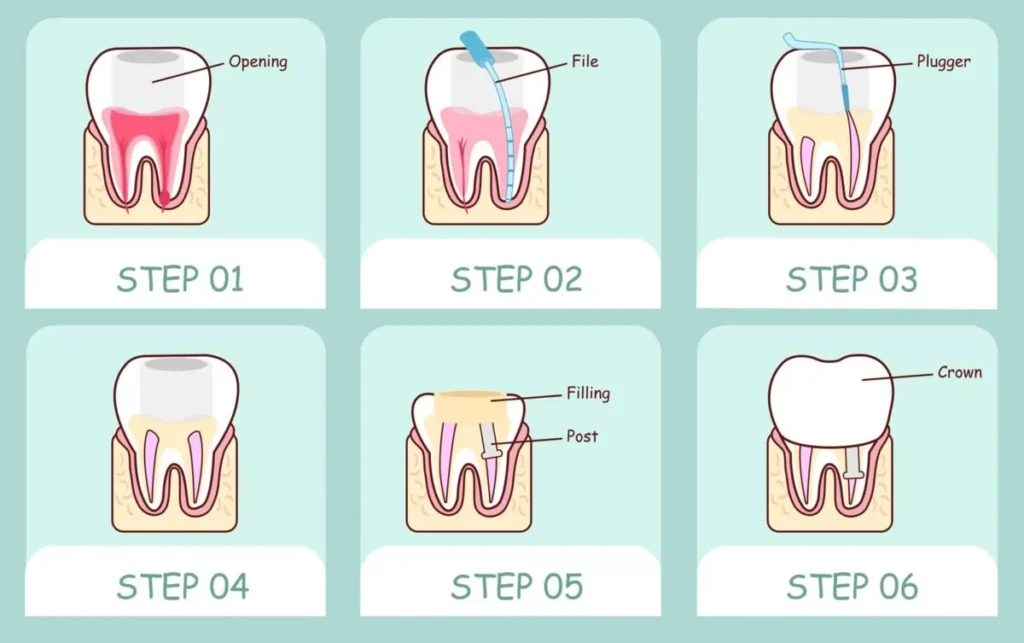
However, if there is severe damage to the pulp chamber due to calcification, an extraction may be the only solution. In this procedure, the dentist or oral surgeon will remove the calcified tooth and replace it with a dental prosthesis such as as dental implant or bridge. This will not only prevent any infection from spreading to the adjacent teeth but also stop a potential relapse of the dental condition.
In any case, it is important that you seek dental treatment immediately if you suspect that you may be suffering from tooth calcification. The earlier the treatment, the better the chances of saving the tooth.
Takeaway
To conclude, the excessive deposition of calcium minerals within a tooth’s pulp chamber and root canals may arise from various factors, including trauma, dental procedures, age-related changes, or long-standing inflammation. While calcified teeth might not always exhibit symptoms, they can potentially lead to complications such as reduced blood flow, increased brittleness, discoloration, or challenges during dental treatments.
If you are experiencing symptoms of a calcified tooth, always inform your doctor so that they are able to assess the dental health of your teeth and advise accordingly. With the right techniques and dental equipments, a root canal treatment can be done even with a calcified teeth.
Last but not least, always practice good oral hygiene such as brushing twice a day or flossing regularly as they can keep your teeth healthy and minimize the risk of developing pulp sclerosis.




